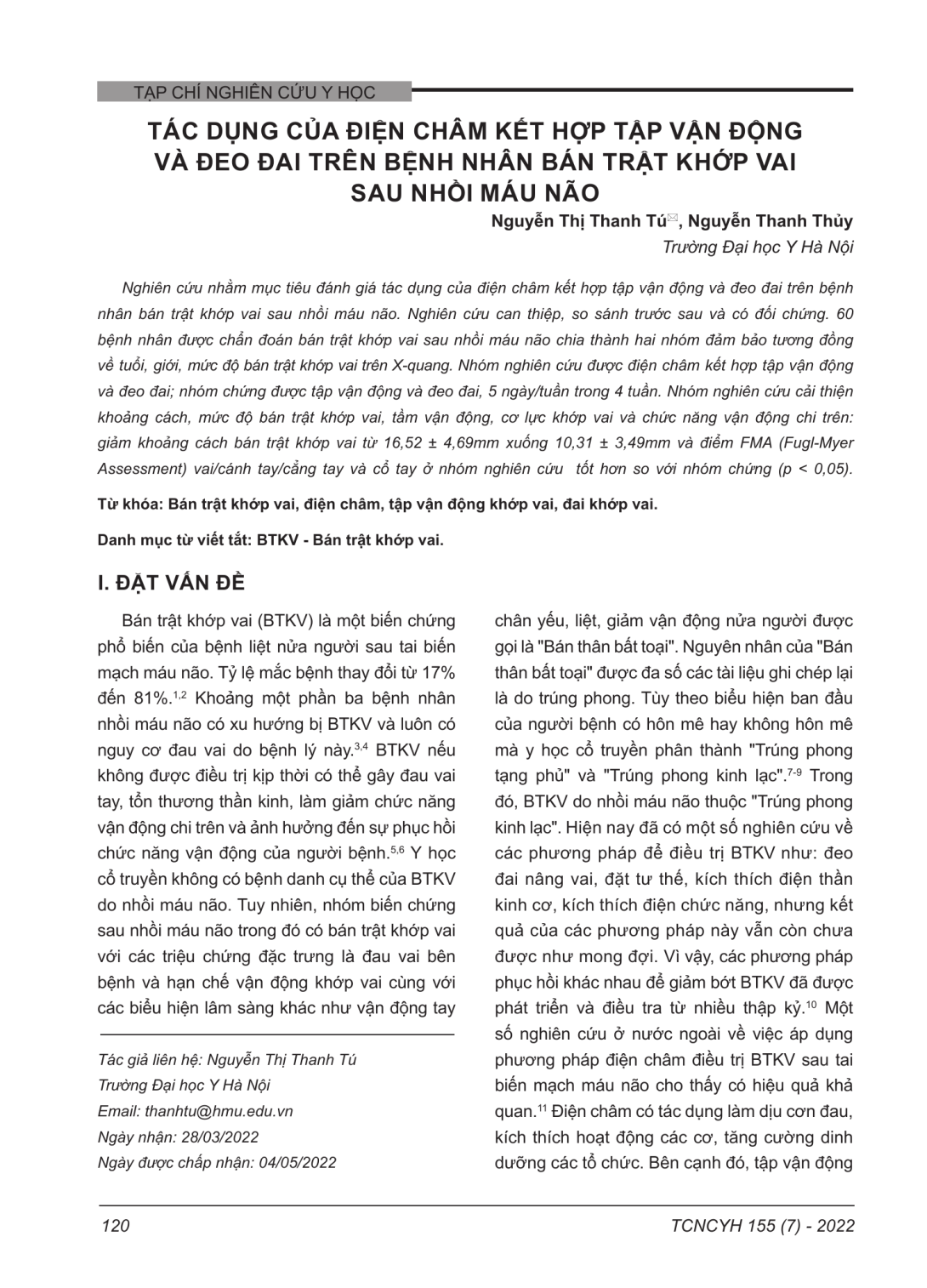
Nghiên cứu nhằm mục tiêu đánh giá tác dụng của điện châm kết hợp tập vận động và đeo đai trên bệnh nhân bán trật khớp vai sau nhồi máu não. Nghiên cứu can thiệp, so sánh trước sau và có đối chứng. 60 bệnh nhân được chẩn đoán bán trật khớp vai sau nhồi máu não chia thành hai nhóm đảm bảo tương đồng về tuổi, giới, mức độ bán trật khớp vai trên X-quang. Nhóm nghiên cứu được điện châm kết hợp tập vận động và đeo đai; nhóm chứng được tập vận động và đeo đai, 5 ngày/tuần trong 4 tuần. Nhóm nghiên cứu cải thiện khoảng cách, mức độ bán trật khớp vai, tầm vận động, cơ lực khớp vai và chức năng vận động chi trên: giảm khoảng cách bán trật khớp vai từ 16,52 ± 4,69mm xuống 10,31 ± 3,49mm và điểm FMA (Fugl-Myer Assessment) vai/cánh tay/cẳng tay và cổ tay ở nhóm nghiên cứu tốt hơn so với nhóm chứng (p < 0,05).
The purpose of this study was to evaluate the effects on electro-acupuncture combined with shoulder joint exercises and shoulder belt in patients with shoulder subluxation after cerebral infarction. This study was designed as a controlled interventional clinical trial, comparing before and after treatment. 60 patients diagnosed with shoulder subluxation after cerebral infarction were divided into 2 groups, according to the method of homogenous pairing of age, gender, and degree of shoulder subluxation on X-ray. The study group was managed by electro-acupuncture combined with exercises and shoulder belt; the control group had shoulder joint exercises and shoulder belt; durations of treatment in two groups were 5 days per week, for 4 weeks. The study group improved in distance, degree of shoulder subluxation, range of motion, strength of shoulder muscle and upper extremity motor function: distance of shoulder subluxation reduced from 16.52 ± 4.69mm to 10.31 ± 3.49mm and FMA (Fugl-Myer Assessment) score of shoulder/arm/forearm and wrist in the study group were better than the control group (p < 0.05).
- Đăng nhập để gửi ý kiến
